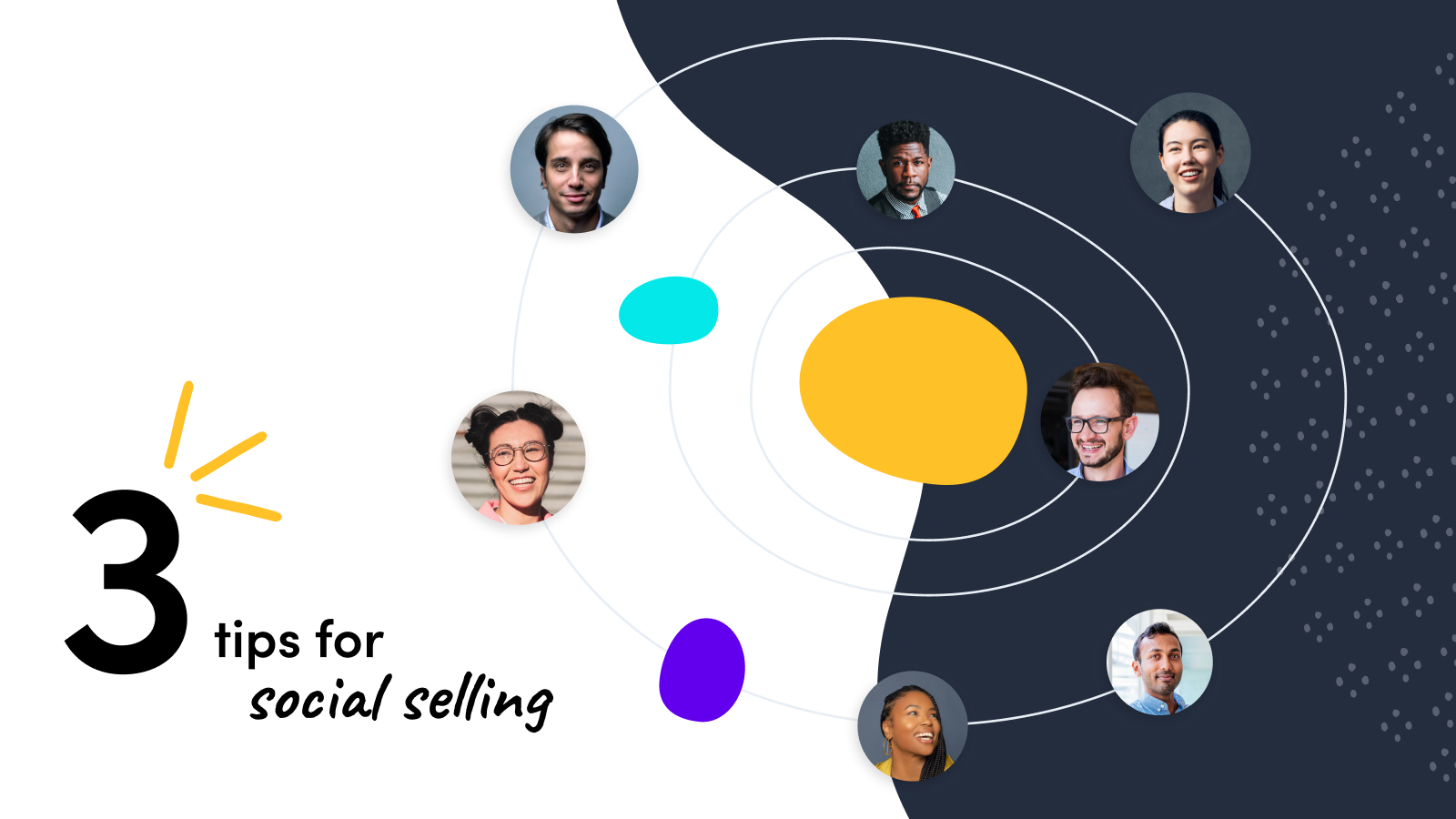When sales professionals start thinking like marketers, that’s when they’re ready to do social selling.
What does it mean to think like marketers? It means becoming attractive to a potential buyer by becoming a valuable source of content and information.
The problem lies when sellers think that social selling is simply selling through social media, so they go out and pitch to everyone they connect with on LinkedIn.
Such a spray-and-pray approach is not social selling.
In this article, I will show you what social selling really is and how a sales team can obtain great results with the right social selling strategy.
What is Social Selling?
Social selling is about forming relationships with prospects through social media and gaining their trust through personalized messaging. The goal is to find the decision makers in your target accounts and provide value to them without pitching. Eventually, this relationship will lead to a sales conversation.
For instance, B2B buyers hang out on LinkedIn, which is great for making connections in a professional setting. Rookie social sellers will send a connection request with a sales pitch or overwhelm the prospect with offers right after connecting with them.
But savvy social sellers will build the relationship over time, writing insightful comments on their posts and sharing valuable information that will solve their pain points.
This is a better approach, as social media interaction will warm up the lead. Plus, the content you share will position you as someone with knowledge and possible insights into their problem.
In today’s digital world, buyers prefer to do independent research before talking to anyone. In fact, data shows that 41% of executives consume three to five pieces of content before engaging with a sales rep.
So how do you get started? Keep reading.
How to do Social Selling on LinkedIn
With 800 million users, LinkedIn is the preferred social media platform for B2B sellers and buyers to connect. Most people are on LinkedIn to talk about business, expand their network, or build their career.
That means LinkedIn members are open to doing business with people they meet on the platform. Unfortunately, in the past few years pushy salespeople have used LinkedIn to shamelessly spam prospects.
However, this is a great opportunity for you to stand out from the crowd and make a difference with good social selling practices.
Here are our top three tips that will turn you into a successful social seller with LinkedIn.
1. Optimize your LinkedIn Profile
Your LinkedIn Profile is not a resume, but a resource for your potential clients. From your banner and headline to the resources in your Featured section, your profile must be customer-centric.
With one glance at your profile, a prospect should be able to tell you what you do and how you can help them.
For example, instead of “Sales Development Representative at Apollo,” a better headline would be “I help small businesses find more prospects and convert them into customers.”
Here’s a quick checklist for a great LinkedIn profile:
- Name and photo: Use your full name (no nicknames, please) and upload a professional headshot for your photo (no selfies or pictures with other people).
- Banner: The banner image or background photo is a 1584 x 396 px picture that you can use for branding with a tagline or slogan. This will help you stand out and capture the attention of those who view your profile. Here are some other elements you can include in your LinkedIn banner:
- Personal or company logo
- Website and social media handles
- Contact info such as phone and email
- Tagline or branded hashtags
- Personalized URL: Your default URL is long, has a bunch of numbers, and would be impossible to remember. The good thing is that you can change it to something like this: www.linkedin.com/in/yourname. Check instructions on how to personalize your URL here.
- The summary: The summary is where you tell people what you can help them with and why you’re the best at it. It’s more like a sales pitch than a resume.
- Featured section: This is where you provide value for your audience. You can add links to projects, books, websites, videos, and other elements that add to your credibility.
2. Conduct Social Listening
Social listening is monitoring online conversations to understand what your potential customer and existing customers are saying about your company and your industry.
This is what you should be looking for:
- What are your clients talking about?
- What do they think about your products or services?
- How do they feel about your brand?
- What do they need from you?
Use tools like LinkedIn Sales Navigator or Apollo.io to search and find your ideal prospects. Study their profiles and follow their activity. When you do social listening you are better prepared to build relationships with prospects.
Pro tip: The Apollo Chrome extension allows you to target qualified prospects, request contact information, and automate engagement all within LinkedIn, streamlining the process of using Sales Navigator.
3. Create your own Social Cadence
Random posting and engaging won’t yield results. An effective social selling strategy requires a consistent cadence of activities to grow your network and create sales conversations.
Plan what you will be doing daily, weekly, and monthly. You should plan activities like:
- Sharing content (once or twice a day, combining third party content and your own content, whether text, video, or images).
- Engaging with posts (liking, commenting, and sharing – go beyond the “Great post!” and “Thanks for sharing!” comments and be insightful).
- Connecting with prospects (have a daily goal of connecting with at least 10 to 50 new people every day).
Nurture those relationships with candid conversations. Position yourself as an expert and offer free advice to help with their pain points. Eventually, they will be ready for you to ask for an appointment and start a sales conversation. That’s real social selling success!





